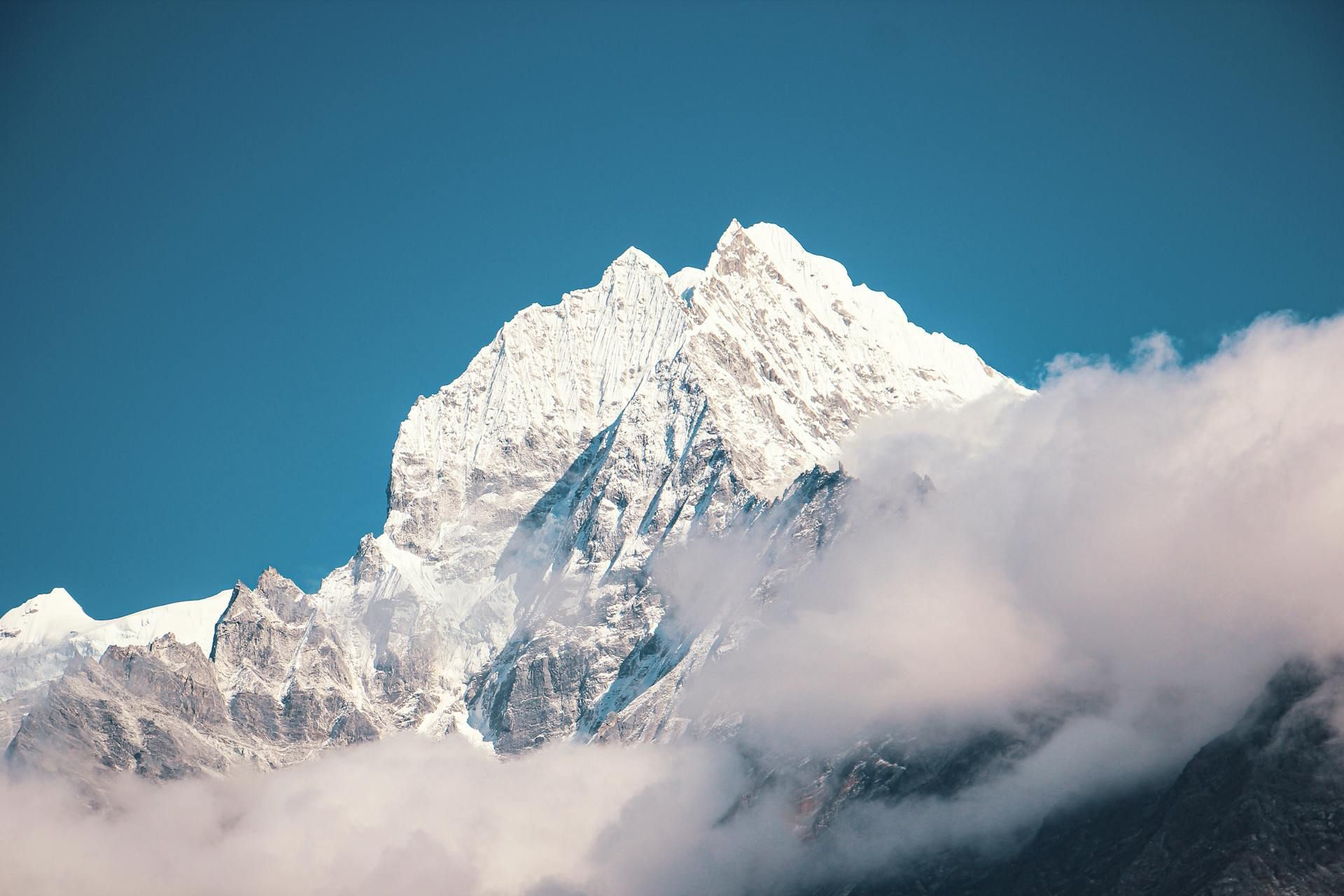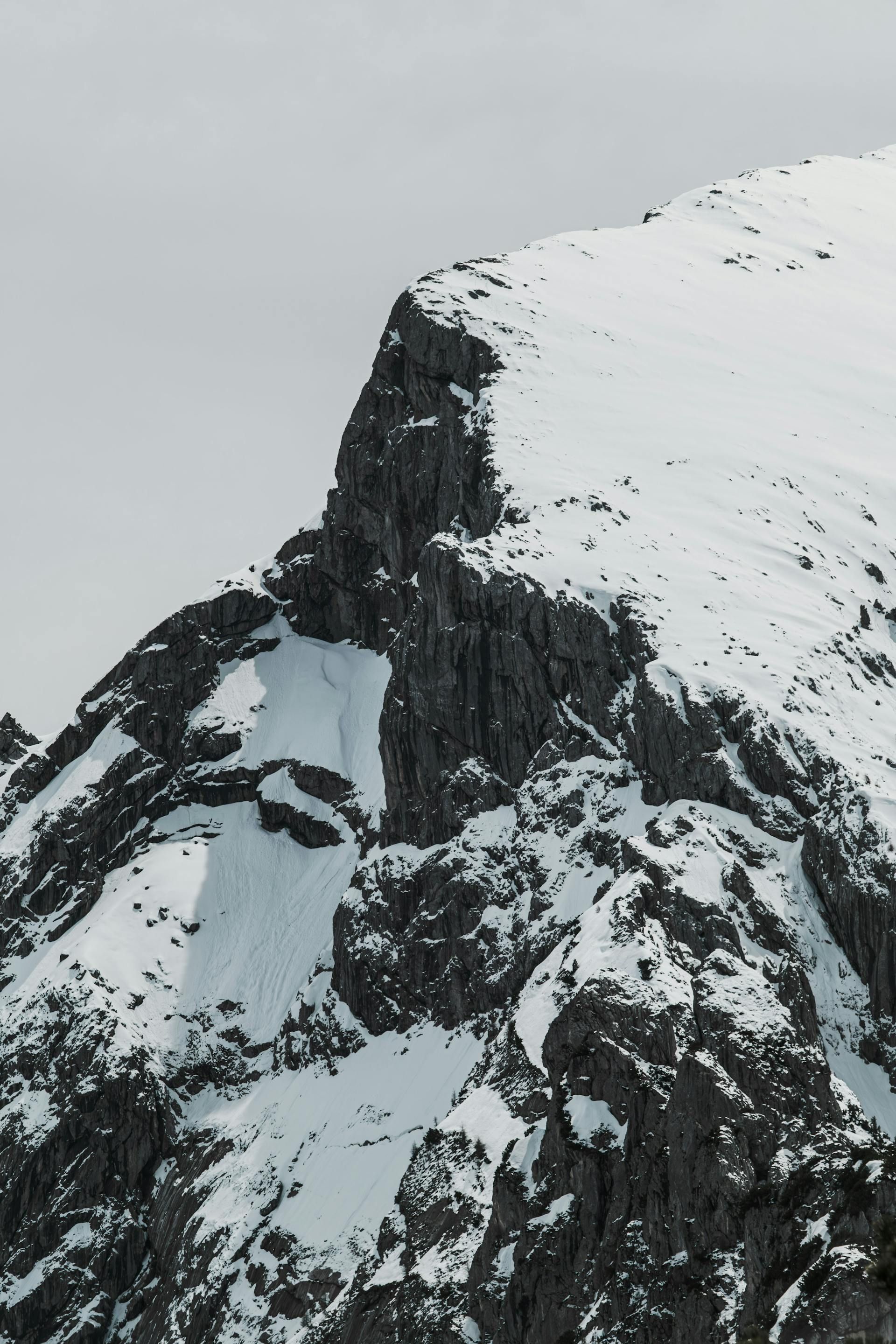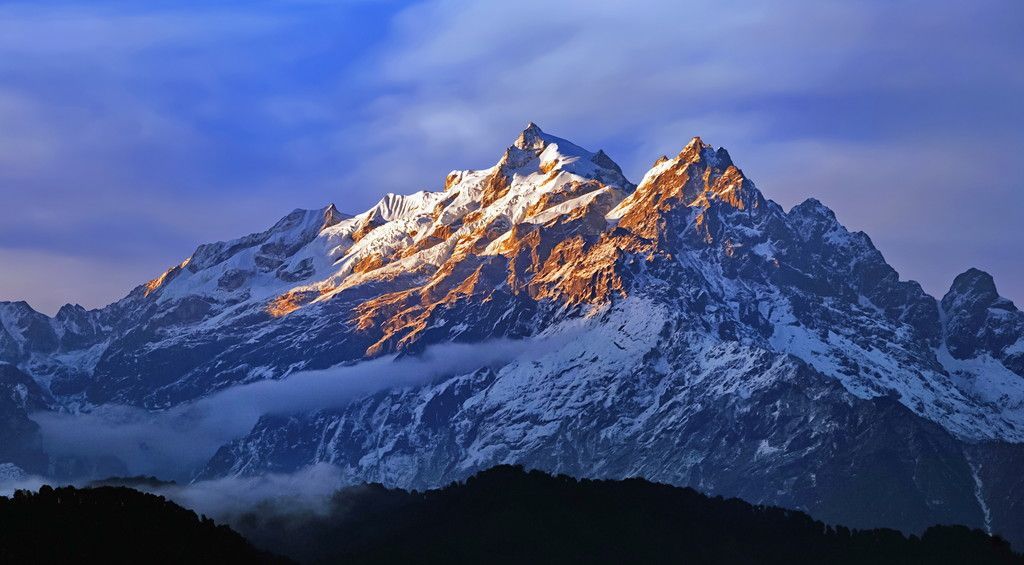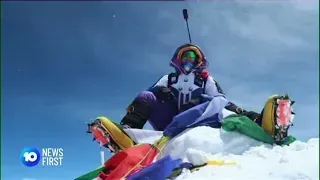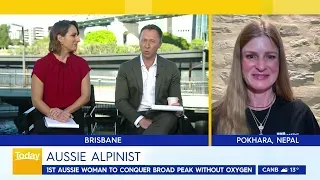fourteen 8000m peaks no oxygen
Allie aim’s to climb all 14 of the world’s mountains that are higher than 8000m, to the true summits, without the use of additional oxygen in the world’s fastest time, in under 3 years. As the name of the project suggests, it is important for Allie to climb in a way that respects the custodians of the land on which she climbs.
The clock started ticking on this ambitious challenge when Allie summited Broadpeak, without oxygen, on the 15th of July 2023. To date she has achieved the summits of five 8000m peaks without oxygen. In May 2024 Allie reached the highest altitude of any Australian woman without oxygen when she summited Makalu 8485m.
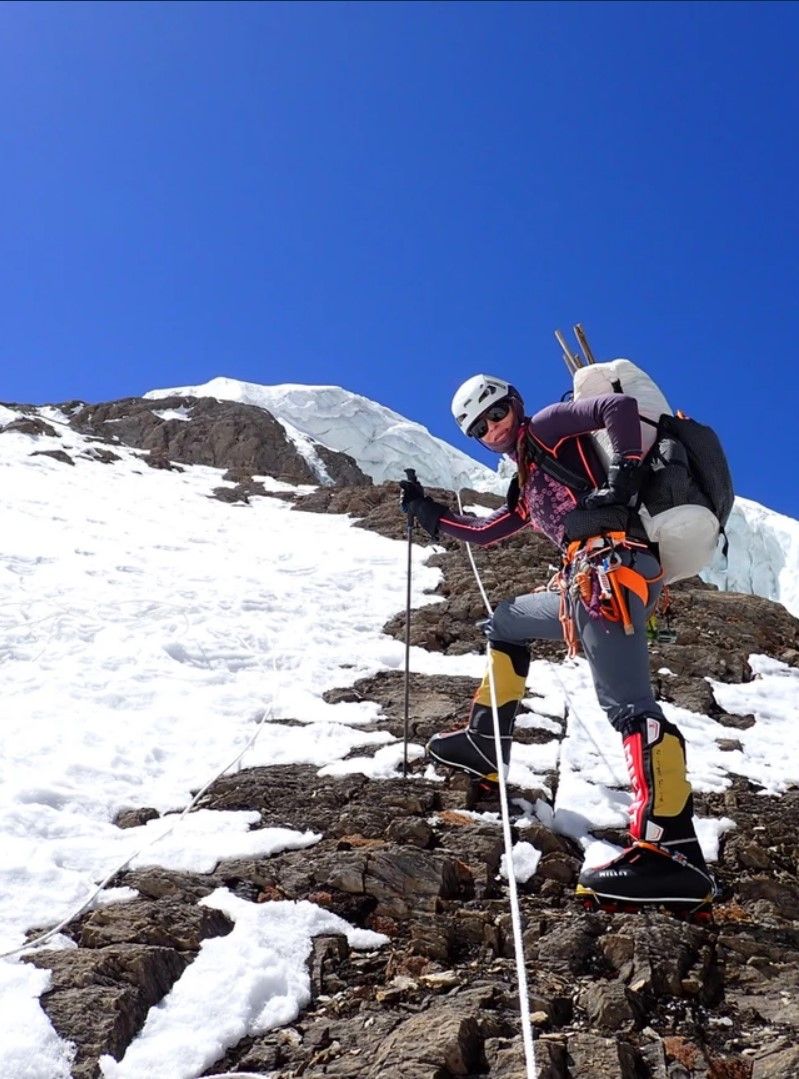
meet the 14 peaks
Mountaineering isn’t just about reaching the summit; it’s about daring to dream of heights yet unseen, envisioning possibilities beyond the horizon, and relentlessly pursuing the peaks of human potential. In the heart of every mountaineer beats the spirit of a visionary, seeing not just mountains, but pathways to the extraordinary.
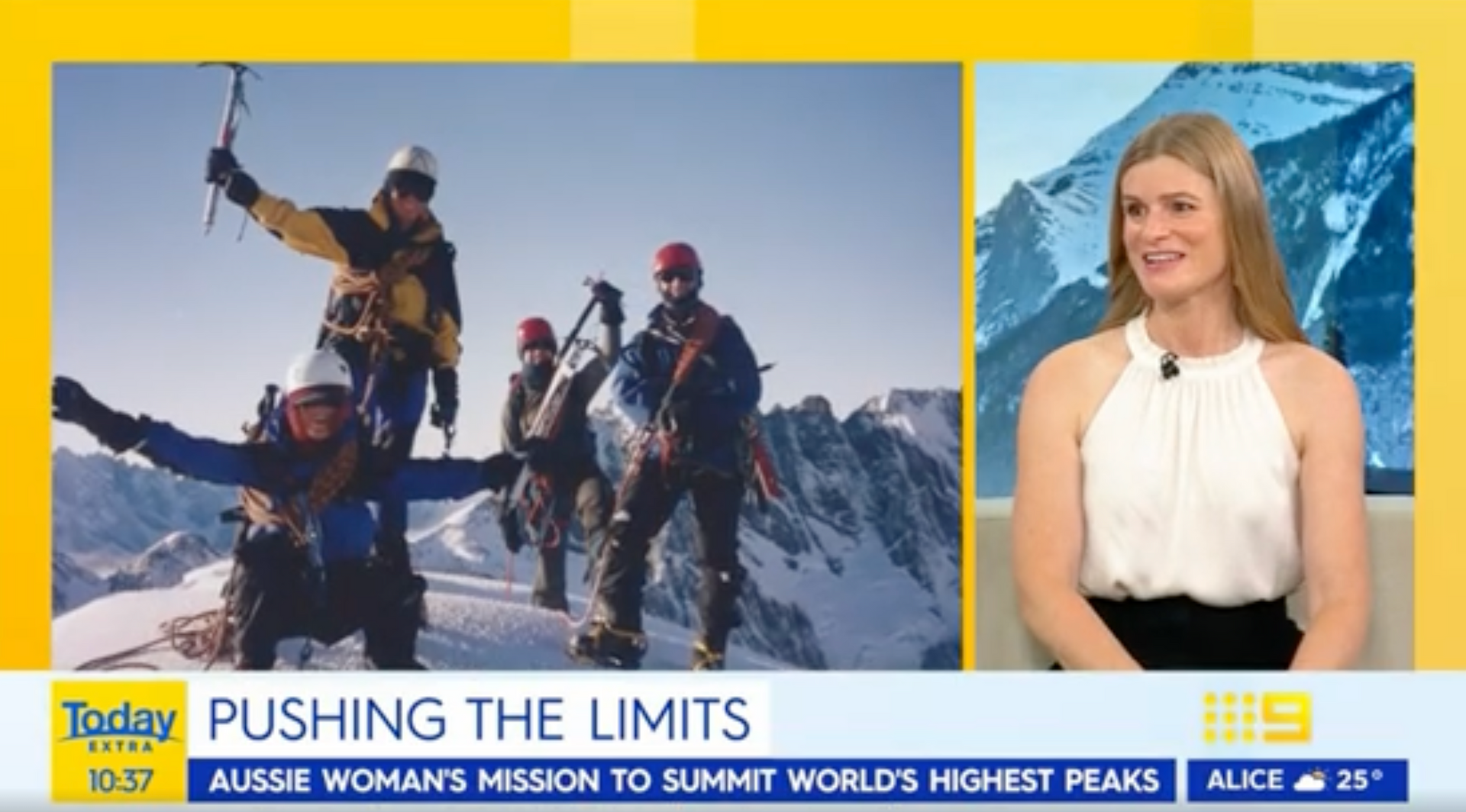
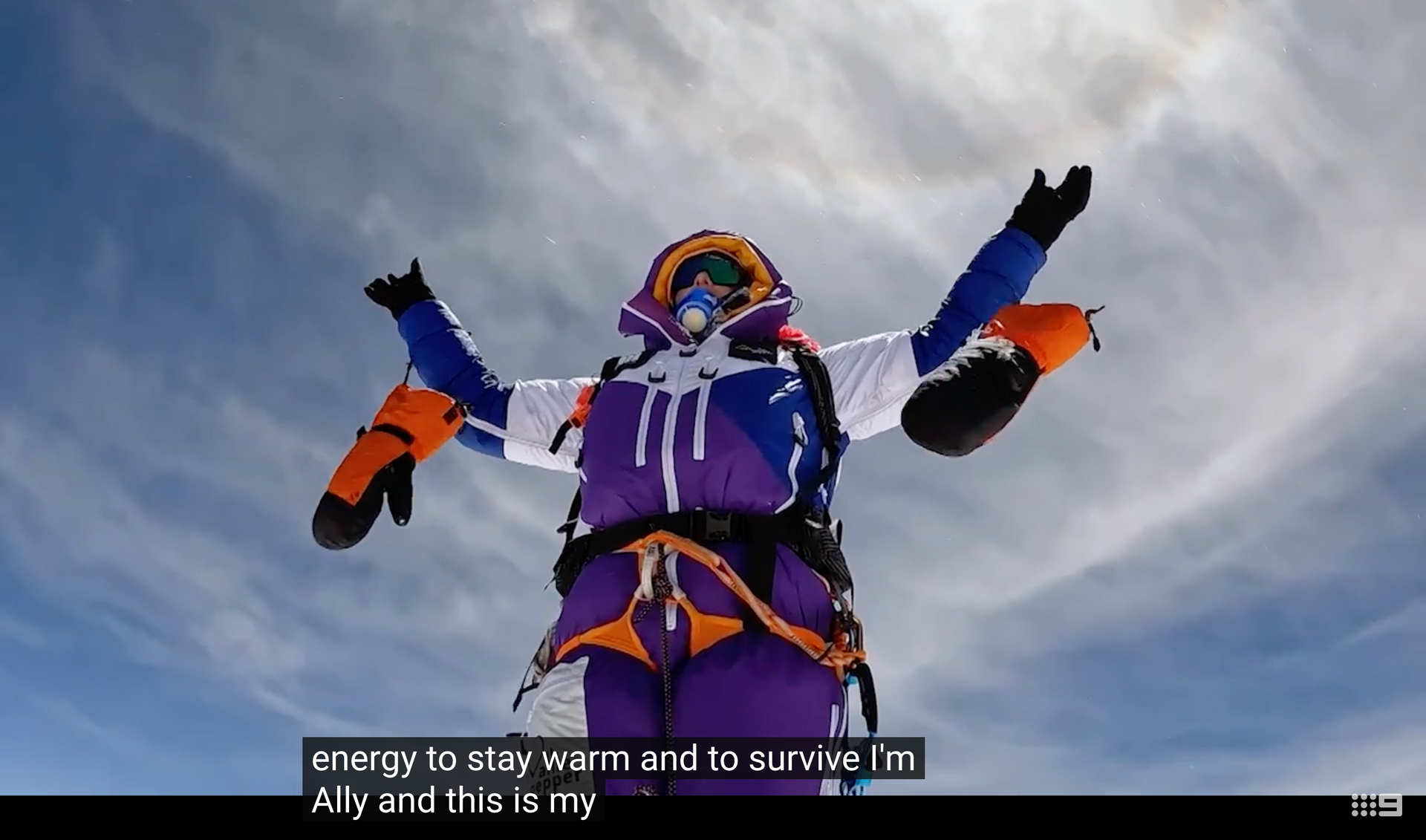
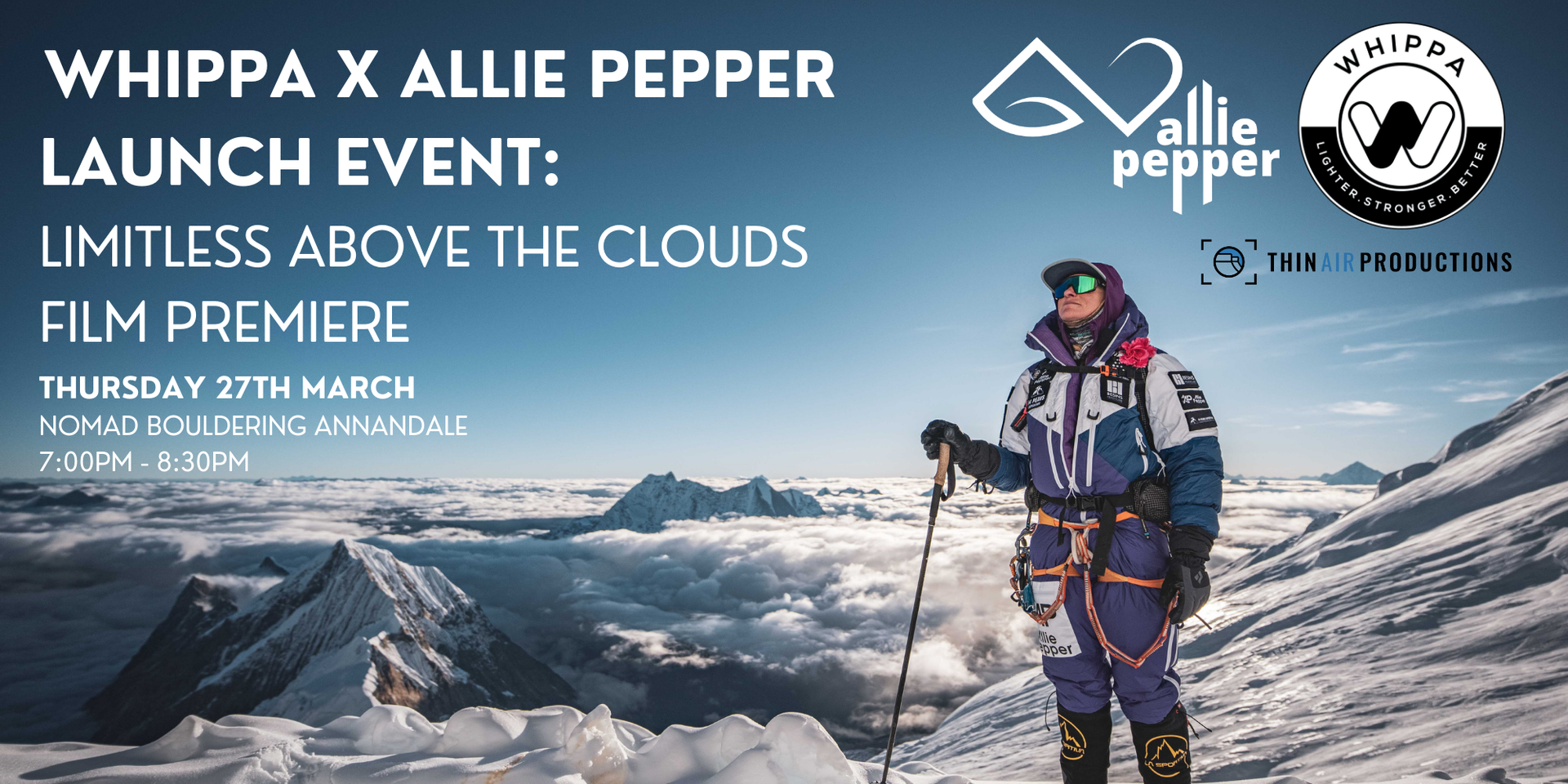
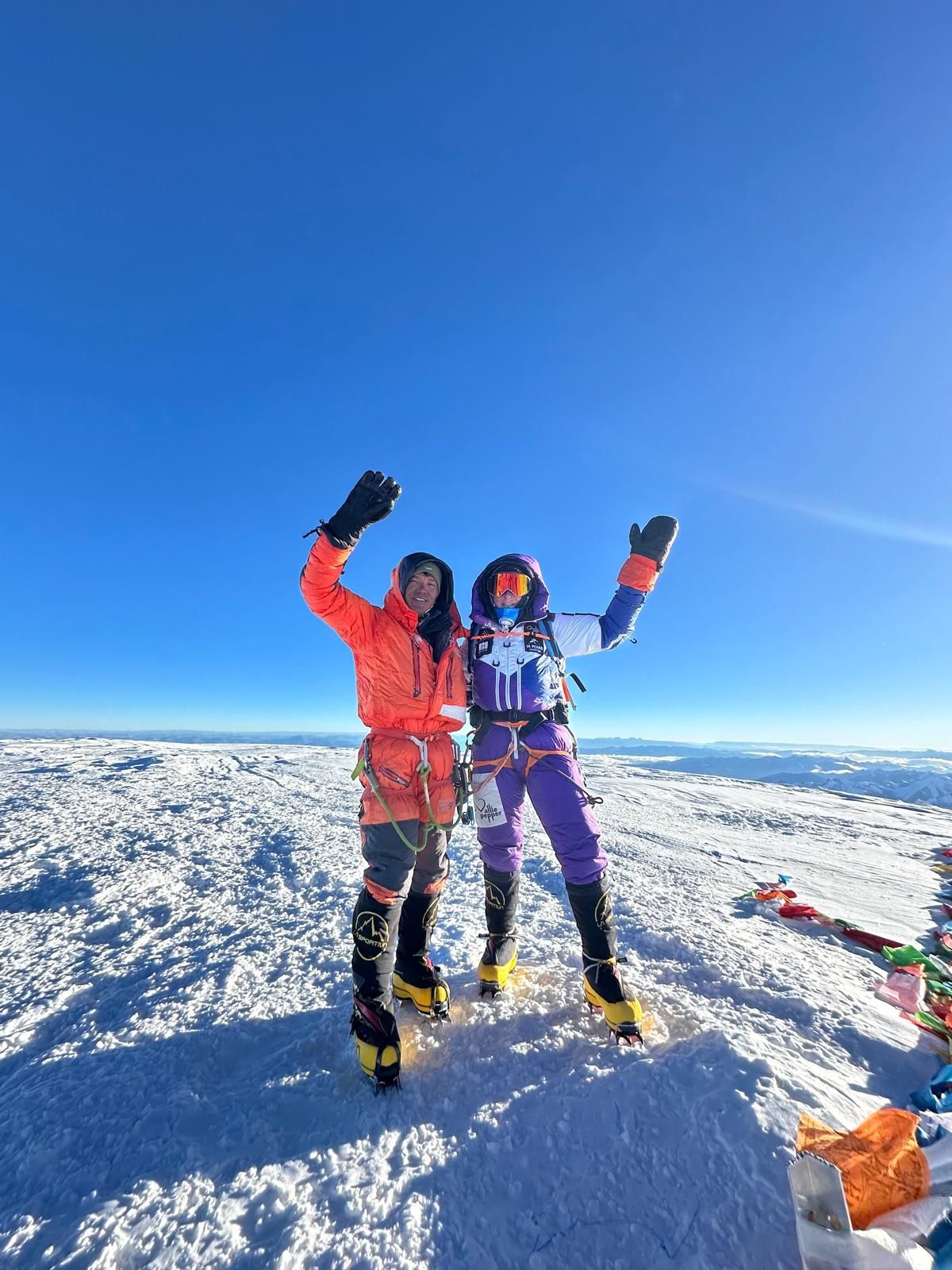
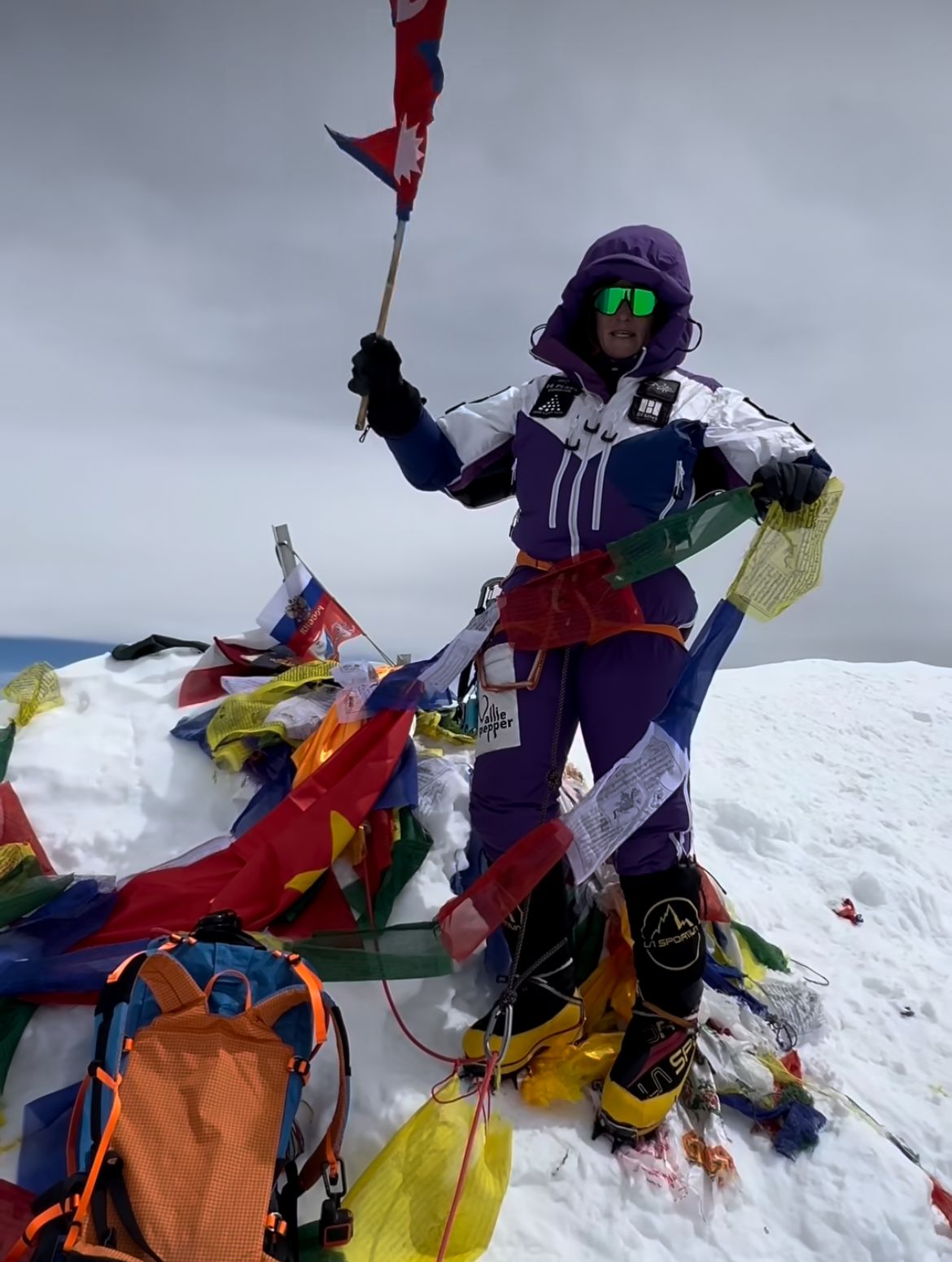

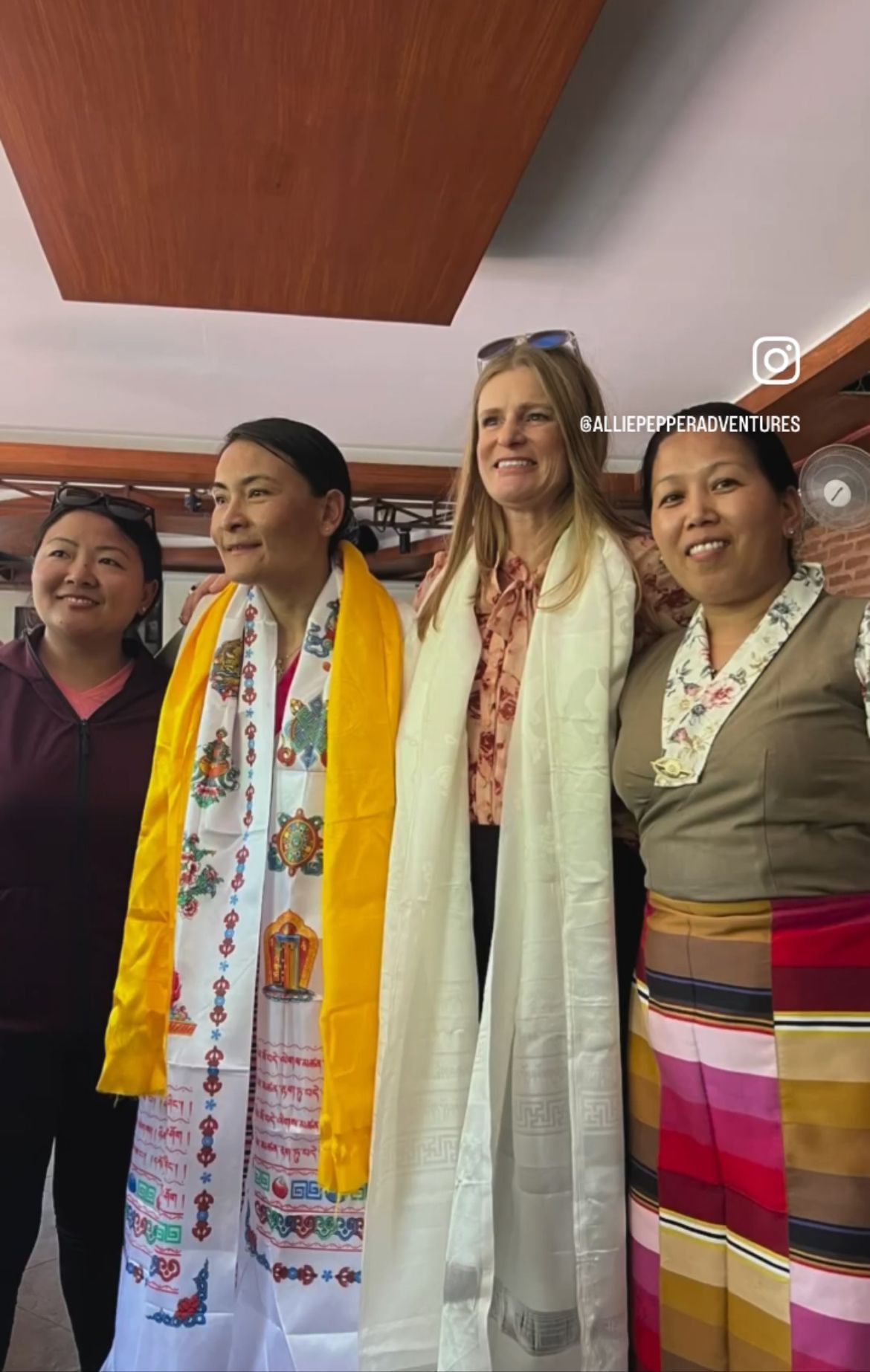
latest updates
about the project
Embarking on a monumental challenge, aiming to climb the world's 14 highest peaks in three years, without supplemental oxygen. This daring adventure demands determination, perseverance, tenacity, skill, physical endurance and resilience. Allie climbs with her partner Mikel Sherpa and they work closely together on the mountain. Beyond personal ambition, Allie's endeavour seeks to inspire others to push boundaries and realise their untapped potential. Climbing without oxygen for Allie is a passion and a mission to see what her mind, body and spirit can achieve in the world of thin air.
frequently asked questions
What are the 14 Peaks?
The "14 peaks" are over 8,000 meters (26,247 feet) in height and are in the Himalaya and Karakoram Mountain ranges in Asia. These peaks are among the most challenging and dangerous in the world to climb due to their extreme altitude, unpredictable weather, and technical difficulties. Summiting requires careful planning, physical fitness, and mountaineering skills.
Summary of the 14 peaks:
·Mount Everest (8,848 meters / 29,029 feet) - the highest peak in the world, located on the border between Nepal and Tibet.
·K2 (8,611 meters / 28,251 feet) - the second highest peak in the world, located on the border between Pakistan and China.
·Kangchenjunga (8,586 meters / 28,169 feet) - located on the border between Nepal and India.
·Lhotse (8,516 meters / 27,940 feet) - located on the border between Nepal and Tibet, connected to Everest by the South Col.
·Makalu (8,485 meters / 27,838 feet) - located on the border between Nepal and Tibet.
·Cho Oyu (8,188 meters / 26,864 feet) - located on the border between Nepal and Tibet.
·Dhaulagiri (8,167 meters / 26,795 feet) - located in Nepal.
·Manaslu (8,163 meters / 26,781 feet) - located in Nepal.
·Nanga Parbat (8,126 meters / 26,660 feet) - located in Pakistan.
·Annapurna I (8,091 meters / 26,545 feet) - located in Nepal.
·Gasherbrum I (8,080 meters / 26,509 feet) - located on the border between Pakistan and China.
·Broad Peak (8,051 meters / 26,414 feet) - located on the border between Pakistan and China.
·Gasherbrum II (8,035 meters / 26,362 feet) - located on the border between Pakistan and China.
·Shishapangma (8,013 meters / 26,289 feet) - located in Tibet, the only peak among the 14 that is wholly within China.
Climbing without additional oxygen
Climbing an 8000m peak without supplemental oxygen is significantly more challenging than climbing with the use of oxygen and requires the body to function in an environment which can cause physical and mental challenges.
At high altitudes, the air pressure decreases, there is less oxygen available to breathe. On an 8000-meter peak, this can be as low as one-third of the oxygen found at sea level. This makes it difficult for the body to function normally, and climbers may experience symptoms of fatigue, headaches, nausea, dizziness, and difficulty sleeping. At extremely high altitudes, these symptoms can progress to more severe conditions, such as high-altitude pulmonary edema (HAPE) and high-altitude cerebral edema (HACE), which can be life-threatening.
The body adapts to the lower oxygen levels by producing more red blood cells to transport what oxygen there is more efficiently. This process, known as acclimatization, takes time and requires the climber to spend several weeks at progressively higher altitudes before attempting the summit. Climbers also need to be in excellent physical condition, have strong mountaineering skills, and possess the mental fortitude to withstand the challenges of climbing at high altitude.
In addition to the physical challenges, climbing without oxygen also requires careful planning and preparation. Climbers need to bring more gear and supplies to compensate for the additional energy expenditure, and they need to be able to move efficiently to minimize their exposure to the extreme conditions.
What about risk?
Allie minimises the risk in the death zone by climbing with the support of her partner Mikel Sherpa. Mikel has guided twenty five 8000m summits. Mikel and Allie sometimes also climb with other Sherpa during their summit push. In 2024 Mikel's brother Nima joined them on the summits of Annapurna, Makalu and Cho Oyu. The Sherpa were born in the Himalaya of Nepal and their ancestors come from the high Tibetan plateau. They are extremely strong climbers at high altitude. Mikel and other Sherpa use oxygen while they guide during the summit push. They carry spare oxygen for Allie in case of an emergency.
Is it even possible?
Seven Summits Treks demonstrated their capability to manage logistics for conquering all 14 peaks within 92 days. They showcased this proficiency during their successful execution of Kristin Harila's 14 peak expedition with oxygen in 2023. Tackling the challenge without supplemental oxygen presents a greater difficulty. Climbing in the death zone without oxygen demands more favorable weather conditions. This may occasionally necessitate helicopter assistance for mountain access. This strategic approach ensures timely arrival at Base Camps ahead of optimal summit weather windows. Allie is confident that partnering with Seven Summits Treks gives her the best possible logistics to be able to complete her challenge within the 3 year timeframe.
Why 3 years?
When Allie committed to realising her dream of climbing all 14 peaks without oxygen, she had the belief that she could complete the project in 3 years. This belief comes from knowing what she is capable of, knowing what Seven Summits Treks is capable of and also giving herself and her team enough time to secure the funding to achieve the project.
What is the “true summit”?
With GPS technology we can accurately locate the highest points on the 8000ers. This had been somewhat difficult in the past on the peaks that have ridges with multiple high points. Now we know, it is not considered to be a verified summit unless the climber reaches the highest point on the mountain, the true summit. Only two men have been verified to have reached the true summits of all 14 peaks without oxygen. Ed Viesturs and Viekka Gustafsson took around 16 years to complete their projects.
What high altitude mountains have you climbed?
ASCENTS OVER 5000m:
Cho Oyu, China 8188m, without supplementary oxygen - October 2024
Makalu, Nepal 8485, without supplementary oxygen - May 2024
Annapurna 1, Nepal 8091m without supplementary oxygen - April 2024
Manaslu, Nepal 8163m without supplementary oxygen - September 2023
Broadpeak, Pakistan 8051m without supplementary oxygen - July 2023
Ama Dablam, Nepal 6812m - October 2022
Annapurna 1, Nepal 8091m - April 2022
Lobuche East, Nepal 6119m - April 2011, April 2017*
Imja Tse (Island Peak), Nepal 6189m - April 2008*, April 2017*
Aconcagua, Argentina 6962m via Plaza Argentina - January 2007*, Febuary 2007*, February 2014*, January 2017*, February 2017* and February 2019*
Cerro Vallecitos, Argentina 5435m - February 2017
Manaslu fore-summit, Nepal 8159m - May 2012
Everest, Nepal 8848m - May 2011
Mera Peak, Nepal 6476m - May 2008*
Cho Oyu, Tibet 8188m without supplementary oxygen - May 2007
Aconcagua via the Guanacos Valley route - Febuary 2004*, December 2004*, January 2005*, Febuary 2005*
Maparaju, Peru 5326m - August 2004*
Artesonraju, Peru 6025m via the Southeast Face - August 2004
Huascaran Norte, Peru 6664m - July 2004*
Vallunaraju, Peru 5686m & 5600m - August 2003 and July 2004*
La Esphinge, Peru 5650m - August 2003
Ishinca, Peru 5530m - July 2003*
Cerro Franke, Argentina 4880m - October 2002
Alpamayo, Peru 5947m via the Ferrari route - August 2002
Toclaraju, Peru 6032m - July 2002
Urus, Peru 5420m - July 2002 & July 2003*
Chopicalchi, Peru 6345m - July 2002
Pisco, Peru 5752m - July 2002
Cerro Ramada, Argentina 6384m - Febuary 2001
Cerro Plata, Argentina 5958m - January 2001 and March 2007
Aconcagua, Argentina 6962m via the Falso Polacos route - December 2000*
*Guided these peaks with clients.


